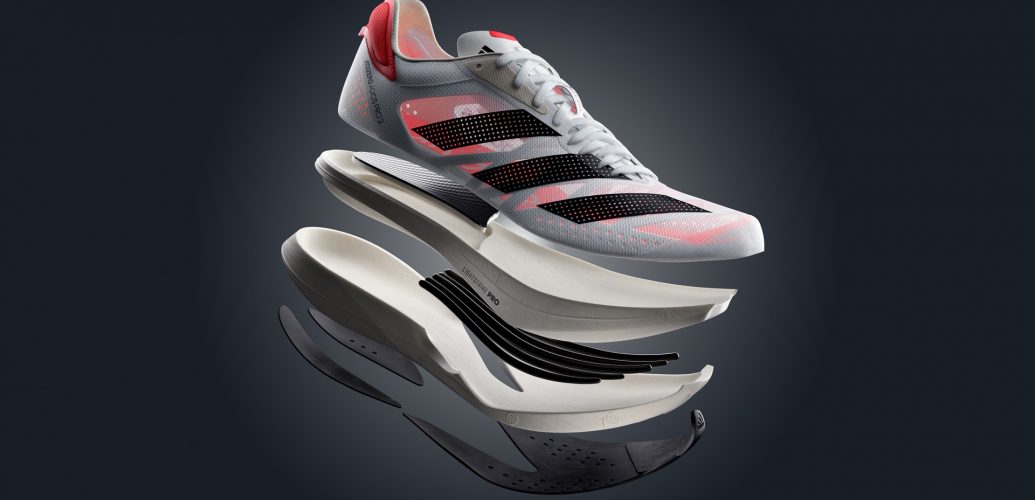Running shoes have undergone significant innovations over the years, aimed at improving performance, comfort, and injury prevention:
Cushioning Technologies:
EVA Foam: Ethylene-vinyl acetate (EVA) foam has been a standard for cushioning due to its lightweight and shock-absorbing properties.
Air and Gel Systems: Brands like Nike and ASICS have developed air and gel cushioning systems (e.g., Nike Air and ASICS Gel) to enhance comfort and reduce impact.
Boost Foam: Developed by Adidas, Boost foam uses thermoplastic polyurethane (TPU) pellets fused together, offering greater energy return and cushioning.
Energy Return and Propulsion:
Carbon Fiber Plates: High-performance shoes, such as Nike’s Vaporfly series, incorporate carbon fiber plates that provide a spring-like effect, enhancing propulsion and energy return.
Pebax Foam: Used in shoes like the Nike ZoomX, Pebax foam is known for its exceptional energy return and lightweight properties.
Lightweight Materials:
Knitted Uppers: Flyknit by Nike and Primeknit by Adidas are examples of knitted uppers that provide a snug, flexible fit while reducing weight.
Engineered Mesh: This material offers breathability and a customized fit while keeping the shoe lightweight.
Stability and Support:
Dual-Density Midsoles: These midsoles provide extra support and stability, particularly for overpronators (runners whose feet roll inward excessively).
Medial Posts: Firm inserts in the midsole to prevent overpronation and improve stability.
Traction and Durability:
Advanced Outsole Designs: Brands like Salomon and Vibram use specialized rubber compounds and tread patterns to enhance grip and durability on various surfaces.
Rock Plates: Protective layers embedded in the sole of trail running shoes to shield the foot from sharp objects and rough terrain.
Customization and Fit:
3D-Printed Insoles and Uppers: Some companies offer custom 3D-printed insoles and uppers tailored to the individual runner’s foot shape and biomechanics.
Adaptive Fit Systems: Technologies like Nike’s Flywire use lightweight cables that adjust with the laces for a more secure fit.
Sustainability:
Eco-Friendly Materials: Brands are increasingly using recycled and sustainable materials in their shoes, such as recycled polyester and bio-based foams.
Smart Shoes:
Embedded Sensors: Some modern running shoes come with embedded sensors that track metrics like distance, speed, cadence, and even impact forces, providing runners with detailed performance data.

